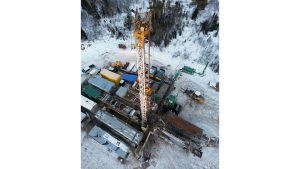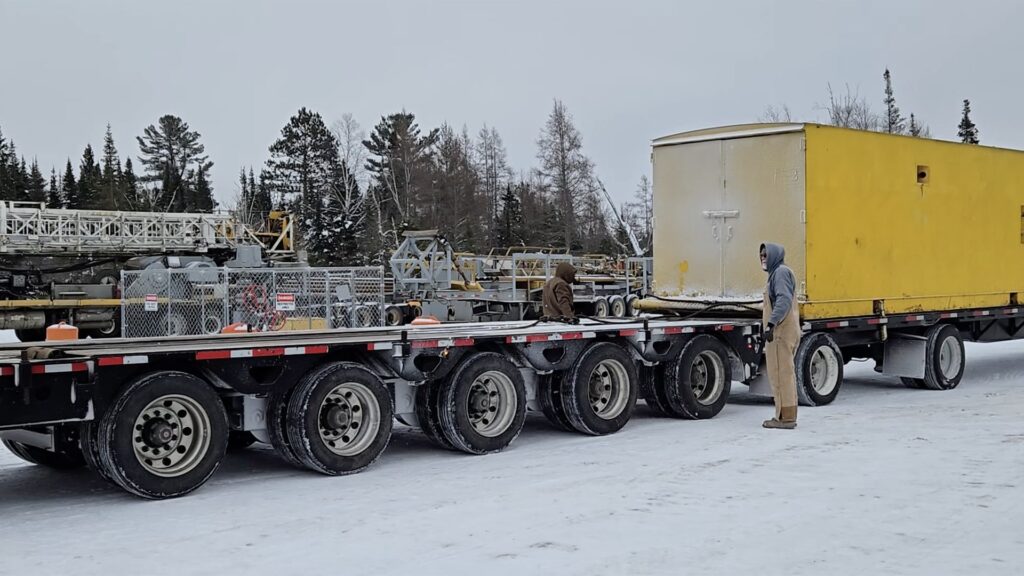A key player in the helium industry, Pulsar emphasizes the importance of recent achievements as he prepares for production.
Helium is an important and rare resource essential to a variety of technology-driven industries, all of which are greatly affected by changing the dynamics of supply and demand. Of the several safe jurisdictional helium exploration companies operating, Pulsar helium boasts several important benefits.
The benefits of the first appearance of two strategically located helium districts, the US and Greenland. Exceptional helium concentrations of up to 14.5% in the Topaz project in Minnesota (the discovery of helium above 0.3% is considered potentially economical). Potential CO2 added value amid growing shortages in the US. Pulsar hosts Tunu projects in Greenland, a strategic location, with the generation of a few major heliums in Europe. Highly incentive management, owning approximately 37% of the issued share capital.
Momentum will be built on the Minnesota Topaz Project
Pulsar Helium deepened Jetstream #1 Well, originally drilled 2,200 feet (671m), with helium concentrations of up to 14.5%. The well was expanded to reach a new total depth (TD) of 5,100 feet (1,555m) on January 11, 2025. This operation fully penetrated and spread beyond the interpreted helium-containing reservoir, providing valuable data on the properties and potential of the reservoir.
Based on the success of JetStream #1, Pulsar Helium completed the excavation of JetStream #2 Appraisal. This reached a TD of 5,638 feet (1,718m) on February 1, 2025. Jetstream #2 successfully intersected the entire height of the reservoir containing the interpreted helium, providing valuable insight into the structure and characteristics of the reservoir.
The completion of these two wells represents a significant advancement in the pulsar helium exploration programme. The impressive helium concentrations observed in Jetstream #1, coupled with the successful penetration of helium-containing reservoirs in both wells, highlight the potential importance of the Topaz Project in Minnesota’s helium exploration landscape.
As Pulsar Helium continues to analyze data from these operations, the results may have important implications for future helium production in the region.
Moving forward towards helium production: Topaz Project Milestones and Future Plans
Drilling Success: Jetstream #2 reached TD in February 2025, confirming a large helium bearing zone. Promising helium concentration: mud log gas analysis reveals an increase in helium levels, Jetstream #1, despite dilution from atmospheric air used in rotary air drills, is up to 7.2%, Jetstream # 2 showed up to 3.5% helium. Uncontaminated samples provide the final helium concentration. Extended Reservoir: High helium values validate spacing containing substantial gases above 2,200 feet (671m), supporting the accuracy of previous geophysical investigations. Continuous Data Collection: Wireline logging and additional downhole data collection are currently underway. Future operations: Optical TV Weyer Imaging, High Resolution Spectroscopy, Pressure and Flow Testing Scheduled for February and March 2025.
“We are pleased to announce that we are committed to providing a range of services and services to delivering the most innovative and important services to our customers,” said Thomas Abraham-James, president and CEO of Pulsar Helium. This strengthens our confidence that Topaz represents one of North America’s most important new primary helium discoveries. We are now moving into a very important testing phase and looking forward to keeping the market up to date with the results. ”
Addresses important market questions
Why is helium grade diluted first?
Some investors question why reported helium concentrations appear to be lower than expected. This is explained due to the simple yet important factor: air pollution. A commonly used rotating air drilling method for helium exploration involves introducing compressed air into the well. This process inevitably dilutes the concentration of the gas encountered, including helium.
In March, pressure and flow tests will provide a more accurate helium grade. At this stage, unstained reservoir samples are collected, allowing for a true assessment of helium concentrations. These results are expected to exceed the 7.2% helium encountered during the excavation stage.
Why are JetStream #1 and JetStream #2 Appraisal Wells so close?
The JetStream #1 and #2 rating wells are strategically located 692 feet (211m) apart. This exact interval is the result of careful technical planning aimed at maximizing understanding of the characteristics of the reservoir. The proximity of these wells serves important purposes. This allows for the assessment of the lateral connectivity between JetStream #1 and #2.

By analyzing the interactions between these closely spaced wells, engineers can better understand the reservoir behavior, leading to more accurate preliminary estimates and more efficient production planning. This approach demonstrates a commitment to thorough reservoir characterization. This is essential for making informed decisions about field development and long-term management.
Why didn’t you test the pulsar test Jetstream #1 while waiting for the completion of Jetstream #2?
The main reason to wait is cost-effective. Mobilizing test equipment twice significantly increases costs. By waiting for JetStream #2 to be ready, Pulsar can optimize resources in a single campaign and test them on both wells.
Why wait until March for pressure and flow tests?
Pressure and flow testing are key steps in evaluating the performance of newly drilled wells. However, performing these tests immediately after excavation can lead to inaccurate results. The wells need to stabilize the time they can remove artificial pressure after drilling and return to natural conditions.
While conducting pressure and flow tests immediately after excavation may seem appealing, patience to obtain meaningful results is key. Waiting through March ensures that collected data provides a true representation of well capacity and reservoir characteristics, leading to more informed decisions in well management and production strategies.
Is there pressure in the well?
Pulsar has not yet released pressure measurements for the wells, as it uses an air drilling method. This technique, which involves forcing air into the borehole, presents a unique challenge for accurately determining the back pressure during the excavation process. To obtain accurate pressure data, the pulsar scheduled a dedicated pressure and flow test for March after ensuring that the wells were stable. This approach ensures a more reliable and accurate measurement of well pressure and flow characteristics.
How long will it take for pulsars to move into production?
There were two important developments on the road to helium production.
In May 2024, Minnesota enacted a law allowing helium exploration leases on state lands, providing a regulatory framework for resource extraction. Before the law and the initiation of Pulsar activities, there was no history of Minnesota helium exploration or production.

In November 2024, Pulsar signed an agreement with Chart Industries, a leading supplier of industrial gas processing plants and equipment, to develop its procurement roadmap. The processing plant itself can take 12-18 months to manufacture, install and outsource.
Strategic relationship with the chart industry
Pulsar has established an agreement with Chart Industries, a globally recognized leader in gas processing solutions. This contract is crucial for the progress of the Pulsar towards production at Topaz.
Procurement Roadmap: The contract outlines a structured procurement plan tailored to the specific needs of the Pulsar. Advanced Gas Processing: Pulsars are essential for accessing cutting-edge helium and carbon dioxide capture technologies and monetizing gas assets. Engineering Research: The Chart Industry conducts research to design helium and CO processing infrastructure and provides important data for future development. Chart expertise in helium liquefaction and carbon capture allows pulsars to move efficiently towards production while also capitalizing Co2 as a valuable by-product. This is consistent with Pulsar’s commitment to environmental responsibility and optimizes the commercial potential of its discovery.
We will proceed with the Tunu Helium project in Greenland
Pulsar Helium is interpreted from a passive seismic investigation conducted by Kap Tobin Prospect within the Tunu project in Greenland. The survey conducted in the summer of 2024 provides important insights.
The two low-velocity anomaly zones are consistent with surface observations of hydrothermal areas and faults associated with gas emissions containing up to 0.8% helium. A study using 150 passive seismic sensors suggests that the rock is fractured more than expected. It promotes helium exploration by providing more space for gas accumulation. These findings provide a clear target for exploratory drilling of helium and potential geothermal energy production.
Given these positive results, Pulsar could seek strategic partnerships to advance the Tunu project, focusing on introducing the Minnesota Topaz project into production.
The Road to Production: What’s next for the Pulsar?
Once the drilling is complete in Jetstream #1 and JetStream #2, the focus shifts to testing and evaluation. The coming months will be exciting as the company gathers critical pressures and flow data to improve resource estimates and production plans.
Test: Pressure and flow tests to determine true helium concentration and well productivity. Resource Update: Independent resource estimation that incorporates new data from recent drilling campaigns. Production feasibility: Chart Industries’ engineering research guides infrastructure plans for helium and CO capture.
With world-class helium concentrations, strategic locations and efficient pathways to production, pulsar helium is poised to become a major player in the primary helium market. Combined with the company’s commitment to transparency and strategic execution, the disciplined approach to exploration and development is well placed to meet the growing global demand for helium.
Conclusion: Clear path forward
The recent success of pulsar’s drilling in the Topaz project highlights the potential to provide much-needed primary helium supply. By addressing key market concerns, leveraging strategic partnerships and implementing well-defined development strategies, the company is rapidly moving forward towards helium production.
With major milestones ahead, Pulsars are firmly on the fast-growing path of production.
This article will also be featured in the 21st edition of Quarterly Publication.
Source link

